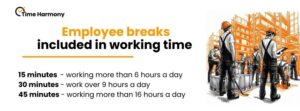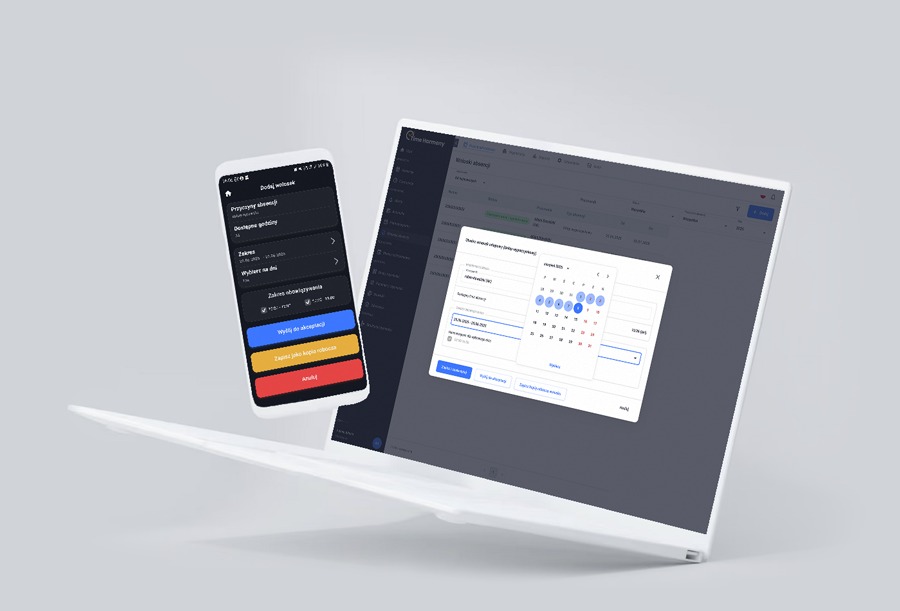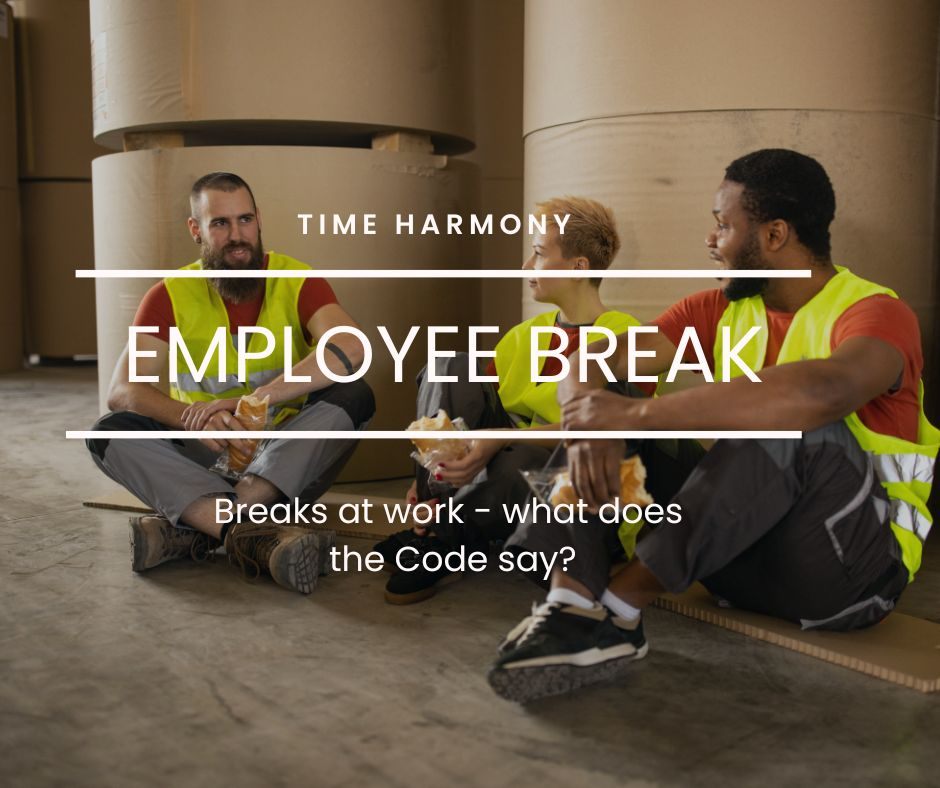In the Polish legal system, the provisions on breaks at work are precisely defined in the Labour Code. Their purpose is to protect the health of employees, ensure appropriate working conditions and maintain a balance between working time and rest. An employee break is not only an employee's right, but also an obligation of the employer, who must provide it.
Paid employee break – how long does it last?
According to the provisions of the Labour Code, every employee employed under an employment contract is entitled to a paid employee break, included in the working time, provided that he or she works at least 6 hours a day. The length of this break may vary depending on the scheduled working time.

Paid break for 8-, 12- and 16-hour working days
According to the amendment to the Labour Code introduced in 2023, the length of paid breaks increases depending on the length of the working day:
- 8-hour working day – 15 minutes of paid break, included in the working time.
- 10- and 12-hour working days – 2 x 15 minutes, a total of 30 minutes of paid breaks, if the working time exceeds 9 hours.
- 16-hour working day – 3 x 15 minutes, a total of 45 minutes of paid breaks, with a working day longer than 16 hours.
These are the minimum length of breaks that the employer must provide in accordance with the regulations. However, he may decide to extend paid breaks.
60-minute free break
Article 141 of the Labour Code allows the employer to introduce an additional, maximum 60-minute break, which is not included in the working time, which means that the employee will not be paid for it. The regulations clearly define the purpose of this break, which is to eat a meal or take care of personal matters by the employee. It should be remembered that the employee must stay at work one hour longer in such a case. This break is introduced by a collective labour agreement, work regulations or employment contract if there is no agreement or regulations.
The introduction of an unpaid break in the company does not deprive the employee of the right to a 15-minute break.
If an employee does not want to take an additional, unpaid break, they can submit an appropriate request in this matter. The employer may, but does not have to, grant such a request.
Additional employee breaks
Certain groups of workers are entitled to additional breaks:
- Employees working at a computer – they are entitled to a 5-minute break after each hour of work, included in the working time, which is intended to reduce the burden associated with working at the monitor.
- Breastfeeding mothers are entitled to one half-hour break if they work 4 to 6 hours a day, and two half-hour breaks if they work more than 6 hours. If you are feeding more than one baby, these breaks are extended to 45 minutes each. Breaks can be combined at the employee's request.
- Adolescent workers – people aged 15 to 18 are entitled to a 30-minute break if their daily working time exceeds 4.5 hours.
- Employees in arduous or harmful working conditions – the employer is obliged to reduce their working time by introducing additional breaks included in the working time.
- People with disabilities – they are entitled to an additional 15-minute break a day.
Breaks for professional drivers
In the case of professional drivers, the regulations are particularly strict. According to EU and Polish regulations, drivers must take at least a 45-minute break after 4.5 hours of continuous driving.
Employee break recorded in the Time Harmony system
Time Harmony is a time and attendance system that, among other things, allows you to monitor the length and frequency of employee breaks. Employees can register their break exit using RFID cards or a mobile app.
With automatic interfaces, the exit and return from the break can be saved in the system automatically. In this case, the mere fact of passing through the turnstile will send an appropriate message to the system.
With appropriate system settings, people responsible for supervising the team's work can receive alerts notifying them of an extended break. The system makes it possible to determine the length of the paid break, in accordance with the principle adopted in the workplace.
Time Harmony shows you the current workflow at a glance. One of the many available system dashboards is the one showing the number of employees on breaks.
The available working time reports show how the distribution of working time is shaped in the workplace, including breaks. Data can be compared across teams or locations.
Consequences of not giving breaks
Failure to give employee breaks is a violation of the law and may lead to the employer's liability. The National Labour Inspectorate (PIP) has the right to check whether the employer complies with the regulations on breaks, and if violations are found, it can impose a fine.
On the other hand the employer can monitor how employees use the breaks they are entitled to, and systems such as Time Harmony allow for full management of working time, which increases efficiency and control over work processes.

Easily manage your company's working time

